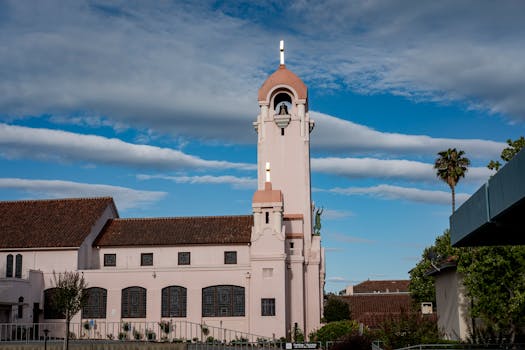Rediscovering the Historical Chronicles of Misión Santo Tomás de Aquino (1791-1849)
The Historical Roots of Misión Santo Tomás de Aquino
The pages of history are filled with captivating narratives that echo the triumphs and trials of the past. One such story is that of Misión Santo Tomás de Aquino, an enduring symbol of tenacity and faith from a bygone era. Nestled in the heart of Baja California, Mexico, this mission stands as a powerful testament to the influence of faith in shaping communities and cultures.
In 1791, Dominican friar, José Loriente, laid the foundation of this mission with an aim to evangelize the indigenous Kumeyaay tribe. The mission was named in honor of St. Thomas Aquinas, a respected theologian of the Catholic Church, symbolizing the Church's efforts to expand its influence.
The Early Flourishing Years of the Mission
In its inception years, Misión Santo Tomás de Aquino was a bustling hub of activity. The friars, with their unwavering commitment, worked tirelessly to transform the land into a sanctuary for the local populace. They introduced agriculture, imparted various trades to the locals, and built a self-sustaining community. The mission became a beacon of prosperity and progress, a symbol of hope in an otherwise barren landscape.
Overcoming Challenges: The Test of Resilience and Faith
However, the journey was not devoid of obstacles. The mission encountered several challenges, including resistance from the indigenous people, scarcity of resources, and the harsh, unforgiving climate of the region. Yet, the friars persisted, their faith unshaken. They faced adversity with unwavering determination and an unyielding spirit.
The Decline and Abandonment of Misión Santo Tomás de Aquino
The mission's golden era was ephemeral. By the early 19th century, it began to decline. Several factors contributed to its downfall. The Mexican secularization act of 1834, which sought to reduce the Church's influence, delivered a significant blow to the mission. The indigenous population, ravaged by diseases introduced by the Europeans, dwindled significantly. The mission, once a bustling hub, gradually morphed into a ghost town.
In 1849, the mission was officially abandoned, marking the end of an era. The once-thriving community was reduced to ruins, a stark reminder of the transient nature of human endeavors. The mission, once a symbol of faith and perseverance, was now a relic of the past.
The Legacy of Misión Santo Tomás de Aquino
Yet, the legacy of Misión Santo Tomás de Aquino lives on. Today, the mission is a popular tourist destination, attracting history enthusiasts and explorers from around the world. The ruins, though a poignant reminder of a bygone era, stand as a testament to the resilience of the human spirit. They serve as a reminder of a time when faith was the cornerstone of communities and the driving force behind human endeavors.
The mission's narrative is also a lesson in perseverance. Despite the numerous challenges they confronted, the friars remained steadfast in their mission. Their unwavering faith and determination are a testament to the power of belief and the human spirit's ability to overcome adversity.
Conclusion: The Resounding Tale of Misión Santo Tomás de Aquino
In conclusion, the history of Misión Santo Tomás de Aquino is a fascinating tale of faith, resilience, and the human spirit. It is a story that resonates through time, a testament to the enduring power of belief and the indomitable nature of the human spirit. As we delve into the annals of history and uncover these forgotten tales, we gain a deeper understanding of our past and a renewed appreciation for the trials and triumphs of those who came before us.

Sign up for Sonoma County Navigator
Discover Sonoma County! Latest News, places to play, stay, eat, live, shop, learn and more!
No spam. Unsubscribe anytime.










